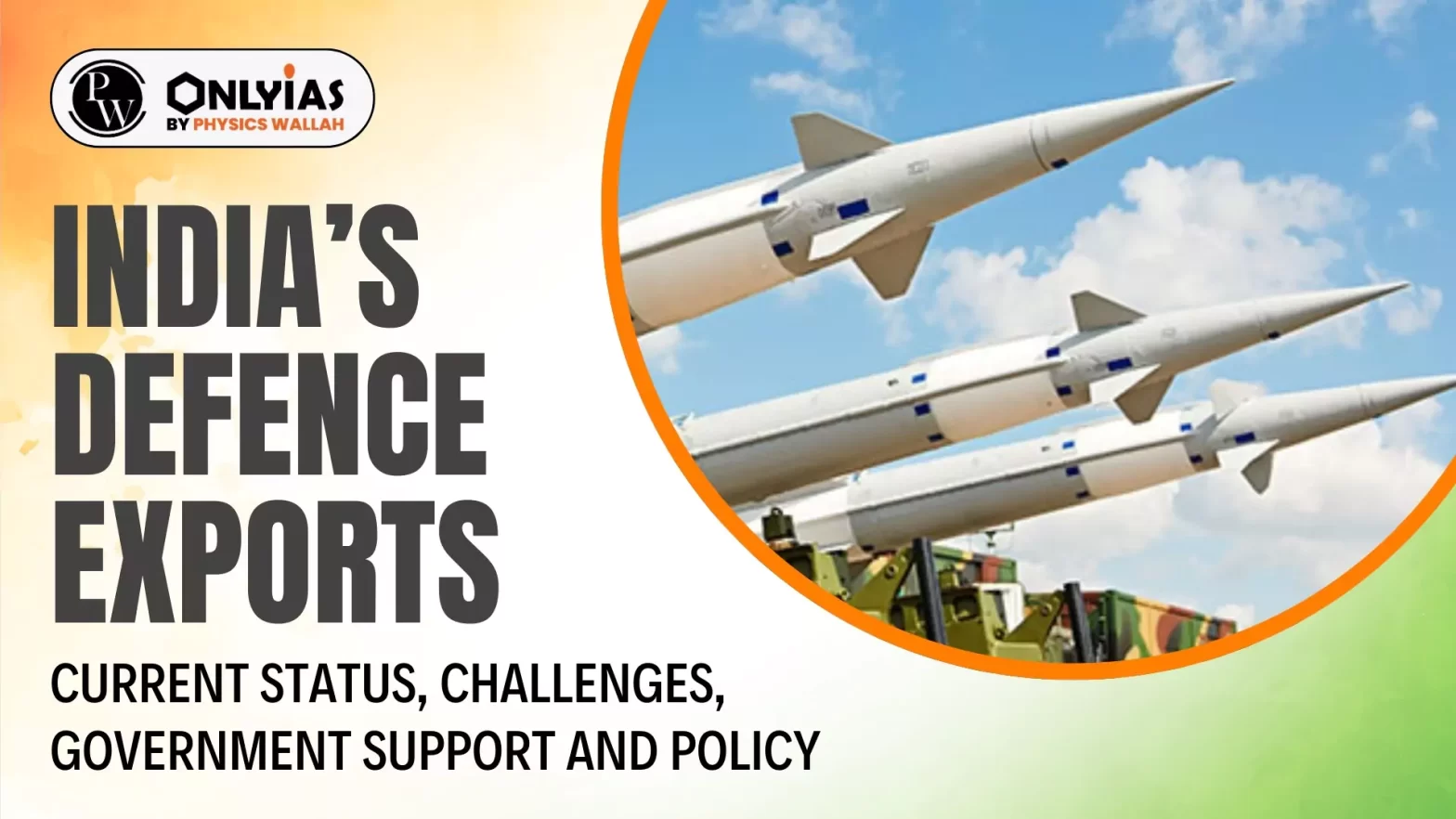![]() 19 Feb 2024
19 Feb 2024

This editorial is based on the news “Defence exports: A strategic imperative” which was published in the Business Standard. With escalating geopolitical tensions driving the expansion of the defence and aerospace industry, India has a significant opportunity to become a key player in the global defence exports market.
| Relevancy for Prelims: Defence Technology, Make In India Vs Self-Sufficiency, and India’s Supply Chain Opportunity, and SIPRI Report.
Relevancy for Mains: India’s Defence Exports: Current Status, Significance, Benefits, Challenges, Government Support and Policy. |
|---|
| Prelims PYQ (2018):
What is “Terminal High Altitude Area Defence (THAAD)”, sometimes seen in the news? (a) An Israeli radar system (b) India’s indigenous anti – missile programme (c) An American anti -missile system (d) A defence collaboration between Japan and South Korea Ans: (c) |
|---|
| Must Read | |
| NCERT Notes For UPSC | UPSC Daily Current Affairs |
| UPSC Blogs | UPSC Daily Editorials |
| Daily Current Affairs Quiz | Daily Main Answer Writing |
| UPSC Mains Previous Year Papers | UPSC Test Series 2024 |

<div class="new-fform">
</div>